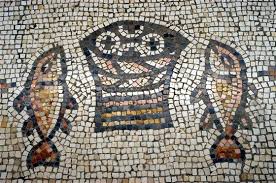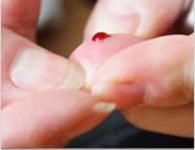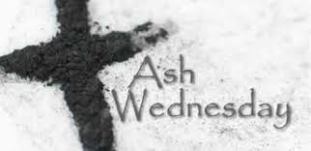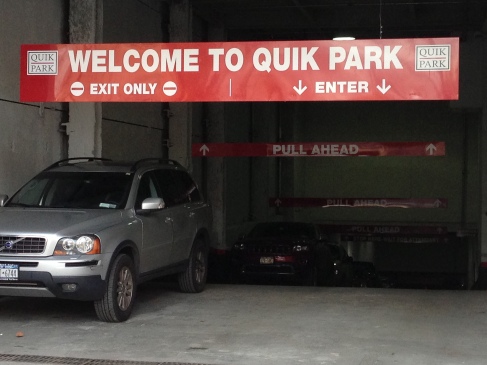 One of the things required of the author of a soon-to-be published book is to find people who will write blurbs. Blurbs are short comments about the book that appear on the back of the cover or sometime just inside. I had to get blurbs for my upcoming book (Hidden Inheritance: Family Secrets, Memory and Faith) and I found one of these blurbs to be kind of insulting to us as a church.
One of the things required of the author of a soon-to-be published book is to find people who will write blurbs. Blurbs are short comments about the book that appear on the back of the cover or sometime just inside. I had to get blurbs for my upcoming book (Hidden Inheritance: Family Secrets, Memory and Faith) and I found one of these blurbs to be kind of insulting to us as a church.
The blurb included this phrase: “the misfits at her New York church.” Now the writer of the blurb also told me to edit what she wrote and that’s what I did. I changed the misfits at her NY church to read the eclectic mix at her NY church Or eclectic community at her church. To me, to call everyone here a misfit just sounded kind of insulting. I wasn’t sure everyone would want to be labeled that way.
On the other hand, I bet that in our heart of hearts, many of us HAVE felt like a misfit at one time or another. Or all the time. Even if we don’t want to be labeled that way. I know that I have. And that’s what drew my attention to something in today’s gospel that I never really focused on before. It’s a story that some of you may be familiar with. Sometimes we call it the feeding of the 5000. In this story, a little boy shares his lunch of 5 barley loaves and 2 fish, and with them, Jesus feeds the multitude. Jesus turns scarcity into abundance, This is a great stewardship sermon, if we just offer what little we have, instead of hoarding for ourselves, God can take that and use that to do far more than we can ask or imagine. Some people think it was a miracle of multiplying. Others think it was a miracle of sharing. And I think that all of that is true. I’ve preached about it many a time. And I’m sure we all need to be reminded of that, I know that I do, reminded that when we look around and see too little, God sees differently. That when I think I might as well save what I have for me and mine since my own wants and needs exceed what I have, God sees differently. God shows us a child with a lunch of bread and fish and challenges us to push beyond the limits we place on our generosity.
But there’s an old rabbinic saying about studying the Torah, studying God’s word. It says… Turn it and turn it again, for everything is in it. Pore over it, and wax gray and old over it. I’ve been turning this text inside out for many years and I AM beginning to wax gray. I’ve been turning it and turning it again for everything that is in it and lo and behold, this time, something different turned up for me. He told his disciples, “Gather up the fragments left over, so that nothing may be lost.”
Gather up the fragments, gather up the broken pieces, gather up the misfits, so that nothing may be lost. Maybe besides being a stewardship story about giving, this is an evangelism story, a story about gathering the fragments, gathering up those rejected and tossed aside, those who are marginalized for whatever reason, the misfits, gather them all up so that nothing may be lost. And maybe it’s a story about truth-telling and justice, gathering up the shattered fragments of truth so that nothing may be lost.
What really happened to Sandra Bland locked up and dead after a routine traffic stop, especially routine if you’re driving while Black? The story comes in bits and pieces. In fragments. And each little jagged piece of information matters. To her family. To her friends. To all who wonder. The fragments that are uncovered will be bloodied and stained with hate, but they matter to those who loved Sandra Bland. They matter to those who identify with her. They matter to those raising Black daughters and sons and moral children of any color. They matter because #Blacklivesmatter And according to today’s Gospel, they matter to Jesus. Gather up the fragments left over, so that nothing may be lost.” Have some pieces of this story been buried? Have some pieces of this story been hidden? Have ALL the fragments been crushed into dust beyond recognition? It seems that way. It seems that we’ll never know the whole truth of what happened. Because the hammer of racism has pulverized that truth.
That should matter to all of us who have been marked with the cross of Christ in baptism. Just as the hunger of the multitude matters. This is a story about feeding the hungry AND gathering the fragments. It is our work as the body of Christ. Feeding and gathering. We will not find all the fragments but we are called to find as many as we can. In the days after 9/11, I remember being invited by a priest friend to join him down at Ground Zero to bless body parts. Fragments of lives once whole. Holy fragments. Because they mattered. Every small piece that was once part of a larger, beloved whole.
Some of us know this in less extreme ways. Many of you know that I’ve been on a journey to discover missing pieces of my own life. I’ve been able to travel in search of fragments of my own lost Jewish history. Every piece I’ve been able to uncover matters to me. Many pieces got edited out of my book which is how it goes, but every piece matters to me. And in searching for whatever fragments I can find, I’ve heard from many other people. People who come from families with secrets, with things that just don’t get talked about, because of fear or shame or guilt or whatever reason, but that leave some aching to know, longing for even fragments of information. One woman mentioned the father her mother has always refused to speak about, “It makes me feel like half of me is missing even at the age of seventy.” The missing pieces of the puzzle leave an empty space that can haunt us.
We also can feel fragmented in other ways. Having too much to do. Torn between demands at work and demands at home. Fragmented in terms of all we have to do and all we long to do. We can feel that we are losing part of who we are. Illness can do it. Alzheimer’s is one disease that cruelly fragments the brain and loved ones long for even fragments of the person who used to be there. We live in a dismembered community, city, nation and world. Even the church commemorating the spot where Jesus is thought to have fed the multitudes has recently been burned down by arson. What God created as a gorgeous whole is been torn apart by tribe and race, by economic forces that separate what God has joined. We are surrounded by the fragments. We are convicted by the fragments. We are summoned by the fragments. Our identity as followers of Jesus is to feed the hungry, to be generous in sharing even in the midst of scarcity and ALSO to gather the fragments, that none will be lost.
What does this mean for us? This means that we prioritize those who are tossed aside and value those who are rejected by others. Nothing and no one goes to waste in God’s economy. I love something written by Derek Walcott, a marvelous Caribbean poet and winner of the Nobel Prize for Literature. He said: “Break a vase and the love that reassembles the fragments is stronger than the love which took its symmetry for granted when it was whole.”
The love the reassembles the fragments is the love of God. The love the reassembles the fragments is the love that gathers us here to worship. A friend told me about a Domestic Violence agency that has a “mosaic” project. In workshops, survivors of violence break old dishes and pottery (cathartic activity in itself) and then use the shards to make beautiful mosaics. Out of brokenness comes beauty and strength. Then my friend said, “I have a large, pottery lamp that was knocked over. I pieced and glued it back together as best I could but its scars are obvious. I love it.”
When Jesus rose from the dead, in beauty and strength, we are told that his scars were obvious. His scars were a reminder that he came to gather the fragments, the misfits, those whose lives were pulverized under the hammer of Roman injustice. Those who lives were scarred by sin. We gather in his name. A strangely beautiful mosaic of broken pieces joined together. More often than not, we sit, and sing and pray among people of different ages and races and back-rounds. We come together. Imperfectly. Inexpertly. But we work at it week after week. On Sundays and in Dinner Church. Pastor Emily Scott, who began a Dinner Church several years ago, recently said: “To sit around the table is not comfortable, but it’s holy … a place where heaven and earth overlap… The gap is real. Building relationships with our neighbors takes hard work and a lot of time and it’s not glamorous.”
No, it’s not always comfortable or glamorous. But it’s who we are. It is recovering God’s image in our own souls. “Gather up the fragments left over, so that nothing may be lost.” So they gathered them up, and from the fragments of the five barley loaves, left by those who had eaten, they filled twelve baskets.
Twelve baskets. Numbers are important in John’s gospel and 12 is a key one. There were 12 disciples. Reflecting the fact that there were 12 tribes of Israel. To gather up 12 baskets of fragments is to gather up 12 tribes, 12 disciples. Which means that the leaders God gathers are a collection of fragments. Broken, scarred, yes, misfits like us. Beloved misfits.
Of course, our work as disciples of Jesus is always imperfect and incomplete, as are we and there are always more fragments to be found and gathered. More pieces of shattered truth to uncover. More misfits to embrace. But we can carry on with the sure promise of our scarred Lord and Savior, that in the end, every fragment WILL be gathered up and nothing and no one shall be lost. Amen.
 On their honeymoon in 1953 my parents visited Lübeck, Germany, to see St. Mary’s Church, the world’s highest Gothic cathedral built of brick. My father wanted to show my mother where he was baptized and confirmed. Eleven years earlier, on Palm Sunday 1942, an Allied bombing raid had attacked this jewel in retaliation for the Nazi bombing of England’s Coventry Cathedral. When my parents visited, repairs were under way. They could look up past the soaring arches and see the sky.
On their honeymoon in 1953 my parents visited Lübeck, Germany, to see St. Mary’s Church, the world’s highest Gothic cathedral built of brick. My father wanted to show my mother where he was baptized and confirmed. Eleven years earlier, on Palm Sunday 1942, an Allied bombing raid had attacked this jewel in retaliation for the Nazi bombing of England’s Coventry Cathedral. When my parents visited, repairs were under way. They could look up past the soaring arches and see the sky.



